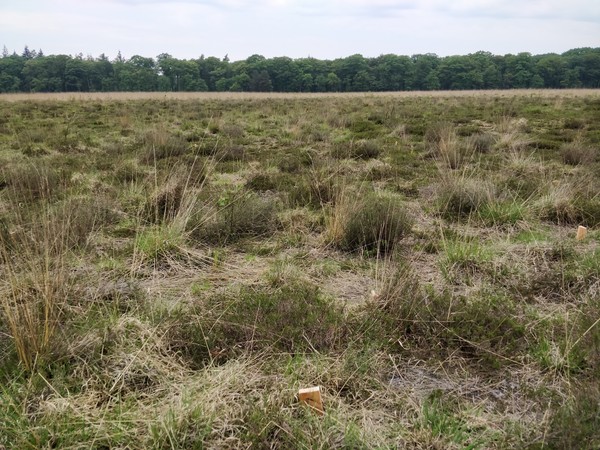Small poles in the ground and vegetation relevés
Sometimes when looking at the pictures, you will not only encounter animals but also some other things. Did you already notice that you often see small poles sticking out of the ground in front of the camera? They are there for a reason! In this blog we will explain why these poles are here and why they are important.

Thanks to your help we will know which species of animals can be found where and when. But why do we see more animals at certain locations than other locations? For instance why do we see more mouflons than red deer in certain areas of the Park? Is it possible that some spots are more attractive to animals than others? And what effect do these animals have on the plants? Just like us, animals like an easy life. They pick places where food is present in large quantities and easy to get to. Animals know what they like and where to find it. Their feeding spot is preferably a safe place where nobody disturbs them while eating. If we know which animals and which plants are where, we can better understand why animals are exactly where they are.
This is why we want to get the answer to all the questions that pop up. But then we also need to know what kind of plants are around the cameras. This is what we are going to investigate. Together with students from Wageningen University & Research, we are performing so-called ‘vegetation relevés’ and ‘density measurements’. With the vegetation relevés we look at what plant species are present and in which quantity. But also what is happening to these plants. Can we for example see traces of browsing? In this way we can find out what plants are preferred by the wildlife. The density measurements are done by a high tech laser. The laser spins 360 degrees while sending out laser beams. When these beams hit a plant or tree they are interrupted and this is registered by the laser. By doing this at different heights we can compose a 3D image of the density of the vegetation.
It would be a lot of work to do this for the entire area around the cameras, which is why we take samples. By measuring just a small area in front of the camera we can still get a good image of the type of vegetation that is around and what is happening to it. This is where the small poles come in. They mark an area of ten by ten meters: a plot. Within these plots we do the vegetation relevés. We can then link the information that we get from this research to the information that we get from the cameras. In this way we can manage the park even better. Because we want to take good care of our flora and fauna!
Written by: Jonathan Filius (intern De Hoge Veluwe)